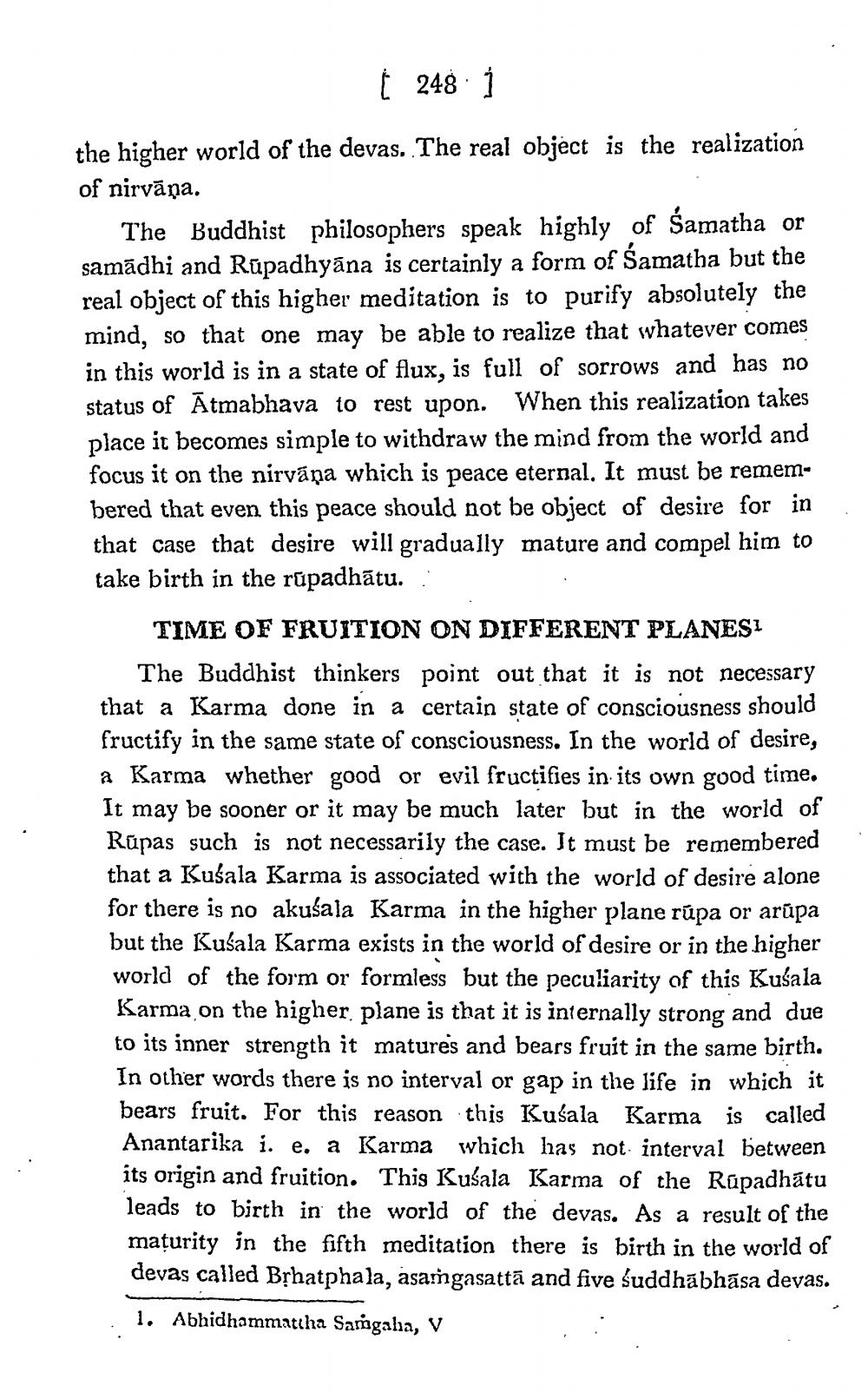________________
Ć 248 1
the higher world of the devas. The real object is the realization of nirvāna.
The Buddhist philosophers speak highly of Samatha or samādhi and Rūpadhyāna is certainly a form of Samatha but the real object of this higher meditation is to purify absolutely the mind, so that one may be able to realize that whatever comes in this world is in a state of flux, is full of sorrows and has no status of Ātmabhava to rest upon. When this realization takes place it becomes simple to withdraw the mind from the world and focus it on the nirvana which is peace eternal. It must be remembered that even this peace should not be object of desire for in that case that desire will gradually mature and compel him to take birth in the rūpadhātu. :
TIME OF FRUITION ON DIFFERENT PLANESI
The Buddhist thinkers point out that it is not necessary that a Karma done in a certain state of consciousness should fructify in the same state of consciousness. In the world of desire, a Karma whether good or evil fructifies in its own good time. It may be sooner or it may be much later but in the world of Rūpas such is not necessarily the case. It must be remembered that a Kušala Karma is associated with the world of desire alone for there is no akusala Karma in the higher plane rupa or arūpa but the Kusala Karma exists in the world of desire or in the higher world of the form or formless but the peculiarity of this Kušala Karma on the higher plane is that it is internally strong and due to its inner strength it matures and bears fruit in the same birth. In other words there is no interval or gap in the life in which it bears fruit. For this reason this Kuśala Karma is called Anantarika i. e. a Karma which has not interval between its origin and fruition. This Kušala Karma of the Rapadhātu leads to birth in the world of the devas. As a result of the mațurity in the fifth meditation there is birth in the world of
devas called Brhatphala, asamgasattā and five suddhābhāsa devas. . 1. Abhidhammattha Samgaha, V




